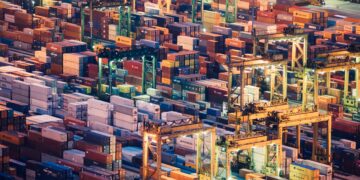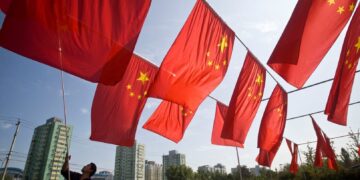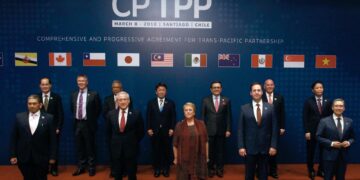Companies that reevaluate their China-based manufacturing operations can remain competitive despite inflation.
by Simon Zhang
Executives across China have been quick to mention rapidly increasing labor costs in recent years as one of their top concerns for their China operations. China’s labor costs in the urban manufacturing sector reached ¥31,000 ($4,579) per employee per year in 2010, more than doubling from just ¥12,700 ($1,534) in 2003. This represents a compound growth rate of 13.8 percent in renminbi (RMB), or 17 percent in dollars after taking RMB appreciation into account. China’s costs are growing at a faster rate than many other countries with low overall manufacturing costs, such as Vietnam, India, and Mexico. But this represents just the tip of the iceberg for foreign companies’ investment prospects in China.
According to analysis by InterChina Consulting, China has reached the turning point at which it can no longer be considered a low labor cost production base, and it will likely never return to that status. However, the negative implications of this trend have been exaggerated and distorted in many cases. Foreign companies should consider factors other than costs and adopt strategies to deal with the cost issue in a strategic and sustainable way.
For enterprises in China, there are critical decision-making factors to consider other than cost alone. These include productivity in China, proximity to the local market, proximity to a high-quality supplier network, and the availability of quality labor.
COST INFLATION IS EVIDENT ABOVE THE ICEBERG, BUT WHAT LIES BENEATH?
High labor costs is just one element in a series of factors that have led to cost inflation in China. Many other costs that affect the bottom line of business operations have also spiked in China recently. For example, the purchasing price indices for raw materials and other manufactured goods as inputs increased by an average of 4.3 percent from 2000 to 2010, even accounting for a heavy dip during the 2009 economic downturn. In most of those years, price indices increased by 5 to 10 percent. Utility prices for industrial usage in many of the 15 provincial capitals InterChina monitored also increased at a compound annual growth rate of 5 to10 percent after 2005. Increases in land rental prices have made regular headlines in recent months as well.
Quick Glance
- In addition to higher land and raw material costs, urban manufacturing wages in China have more than doubled from 2003 to 2010.
- Capital- and labor-intensive manufacturing operations should consider new strategies to deal effectively with cost inflation and remain competitive in China.
- Some companies have moved operations to inland provinces or have automated production processes to mitigate rising costs.
Despite these cost increases, many foreign companies still consider China an important market. For the past 10 years, roughly 80 percent of executives have said that China is one of their companies’ top three global investment destinations, according to annual surveys by the American Chamber of Commerce in China. Over the same time period, approximately 70 percent of executives reported that their firms’ operations in China are profitable or very profitable. Proximity to the market has been a key determinant in Chinese investment decisions. Many people assume that companies that invest in China do so to export goods—but for the past 10 or more years this has been the exception rather than the rule. In fact, foreign manufacturing companies in China export less than 25 percent of their gross industrial output, even after including the companies in Hong Kong and Taiwan, which generally post high levels of exports.
Given this steady interest in China as a global investment destination, it is important to understand the rising labor costs against the larger context of China as a maturing, yet robust market. China’s market is one of the world’s largest and continues to grow at an enviable pace. Many observers also overlook the fact that China’s manufacturing sector productivity, which achieved a compound annual growth rate of 16.5 percent from 2004 to 2010, has increased rapidly in recent years. Productivity gains, which were achieved largely through investment, have successfully offset the impact of the fast-growing labor costs in the past. China is now, however, taking steps toward shifting to an economy driven by technology upgrades, innovation, and revamping of business models. This trend is likely to continue to offset, at least partially, the impact of rising labor costs in coming years. Though labor costs in Vietnam and other low-cost countries are approximately one-half to one-third less than Chinese labor, productivity in many low-cost countries is considerably lower than in China.
Many people assume that companies that invest in China do so to export goods—but for the past 10 or more years this has been the exception rather than the rule.
Consumption will become one of the key drivers for business as China shifts from investment and export-driven gross domestic product (GDP) growth. The size of China’s middle class is likely to triple in the next 10 years. But China’s market is becoming more complex, and will require a higher degree of localization to be successful. In the future, firms that manufacture or design products in China for the domestic market will become more competitive. Highlighting this trend, many Fortune 100 companies have designated China as their second home country or second global headquarters.
China’s relatively mature supply chain has also persuaded foreign companies to stay in China rather than move away. In fact, companies frequently cite less developed supply chains in many low-cost countries as a barrier to investment. Even in the well-publicized case of Nike, Inc., it has taken more than 16 years to lower the amount of raw materials the company imports to Vietnam from 98 percent to 56 percent, even with significant support from the Vietnamese government.
RUSHING TO “RESHORE”?
The issue of relocating away from China—or what some are calling the “reshoring” of manufacturing—has become a hot topic. Sleek Audio (with an estimated global revenue of $790,000) moved production back to the United States in early 2010, citing cost issues and quality control. The Outdoor Greatroom Co. (with global revenue of $5 million) also moved production back to the United States, citing a need for proximity to other facilities, shipping delays, and a need for greater quality control.
Companies that have so far chosen to reshore their manufacturing facilities have been export-oriented companies with little to no customer base in China and limited prospects for establishing such a base. In the past, these companies only manufactured in China because of the cheap labor costs, and the nature of their business in China has been considerably labor-intensive. Factors such as concerns over quality, high shipping costs, and delays are likely to outweigh the diminishing labor-cost advantage.
However, many companies in the past and likely most in the future will be targeting China’s large domestic market. In the US-China Business Council’s annual survey of member company priorities, 93 percent of respondents in the 2011 survey said their companies were in China to reach the China market. Forty-three percent of respondents said their companies used China as an export platform to non-US markets, and 27 percent used China as an export platform to serve the United States.
Companies with a focus on China’s domestic market are likely to stay in China in the medium term, including the leaders in the value chain of the electronics, food and beverage, energy, chemicals, auto, pharmaceuticals, machinery and industrial goods sectors, in addition to the component and material suppliers involved in the value chain. Some export-oriented companies have started to balance their strategic focus in China for both export and for China’s market to respond to the market trend.
Both capital- and labor-intensive operations will need new strategies to deal effectively with cost inflation and remain competitive in China.
Some companies, such as Nike, have chosen to diversify their production locations to other low-cost countries, rather than drastically reduce the production base in China (see chart). Media reports have cited labor costs as playing a large role in Nike’s move to Vietnam. But Nick Athanasakos, Nike’s vice president in charge of global sourcing and manufacturing, pointed out in late 2011 that Nike is looking ahead to Vietnam joining negotiations on the Trans-Pacific Strategic Economic Partnership Agreement (TPP) and Vietnam-EU Free Trade Agreement (FTA), which would lead to more favorable trade policies between Vietnam and the United States and European Union. The share of Nike’s shoes produced in Vietnam increased from 15 percent to 39 percent in the past 10 years mostly because of decreases in production in Indonesia and Thailand, according to its annual reports.
ADAPTING TO A NEW REALITY
While it will be easy for manufacturers to remain in China in theory, it will become difficult to stay competitive in China in practice. Both capital- and labor-intensive operations will need new strategies to deal effectively with cost inflation and remain competitive in China.
Relocating operations to inland provinces and cities is possibly the most frequently mentioned approach to cost inflation in China. Hewlett-Packard Co. began this process in the mid-2000s with a facility in Chongqing responsible for applications, infrastructure technology, and business process outsourcing for HP’s enterprise customers in China and globally. HP opened in 2008 its second personal computer manufacturing facility in China in Chongqing with an investment of $3 billion, and set up a call center in Chongqing that serves customers in China and globally.
However, HP’s decision was not purely driven by the labor costs in western China. Labor costs in inland cities are increasing at a faster pace (typically 15 to 20 percent) than in coastal cities (typically 10 to 15 percent), which means the current labor cost advantage in inland cities is temporary. For HP, Chongqing provides a chance to better target China’s inland market and Europe. HP’s plant in Chongqing will be capable of producing 20 million laptops a year once the plant is fully operational. Much of the facility’s products will be exported to the European market. The Eurasia Land Bridge railway line allows companies to export products to Europe in roughly 13 days, dropping from 36 or 37 days by container ship.
Some companies will be able to further increase productivity to offset cost inflation, especially companies that could further automate assembly lines in their China operations. For example, in sectors such as home appliance components, many companies’ production setup is still heavily labor-intensive or only partially automated in China. In their home countries in Europe or the United States, facilities are equipped with state-of-the-art assembly lines worth several million dollars. However, facing high cost inflation in China, many companies have decided to gradually shift their production setup to a higher degree of automation. This is not only a defensive strategy to deal with labor costs, but also a proactive action to manage high labor turnover in China, and deal with shortages of skilled workers and operators. One of InterChina’s clients plans to automate two of its assembly lines to replace 18 semi-skilled workers. In this case, the company will save money even when taking into account the annual depreciation of the expensive machinery.
For export-oriented companies, especially those with relatively high value-added—such as technology, consumer electronics, fine chemicals, pharmaceuticals, and software sectors—refocusing on China or adding more weight to domestic sales in China may be a good choice. Some companies may also need to take steps to move their export business to other low-cost countries, especially to those near the target market. According to InterChina’s analysis, China will likely lose its cost competitiveness between 2015 and 2020 when compared to other low-cost countries with similar supply chains, such as Mexico and the Czech Republic. Companies should consider long-term goals, such as global resource optimization. In one case InterChina handled, the client agreed to make the necessary optimization of capacity in North America and China, which had significant impact on future investment decisions. This export-oriented client will move its export business back to North America in the medium term, but it will develop the dedicated sales focus in China to contribute to the global top-line growth with reasonable margins in China.
Foreign companies can also offer higher value products and services. For example, Caterpillar China plans to invest $1 billion over the next few years to add more local dealerships and increase research and development, distribution, used equipment sales, and manufacturing and leasing activities. The firm also plans to improve after-sales service. These actions aim to address the challenge from increasingly competitive Chinese players and the rapid rise of cost inflation.
Cost inflation is a reality in China, but China’s domestic market will remain attractive enough to bring continued rewards to those companies able to stay and localize to beat the competition. Luckily, new tools are available for foreign companies in China, though each solution has to be tailor-made for each company’s individual situation and must strike a balance between the cost issue and other critical strategic issues.
[author] Simon Zhang ([email protected]) is InterChina Consulting’s managing director of strategy practice based in the company’s Shanghai office. [/author]































